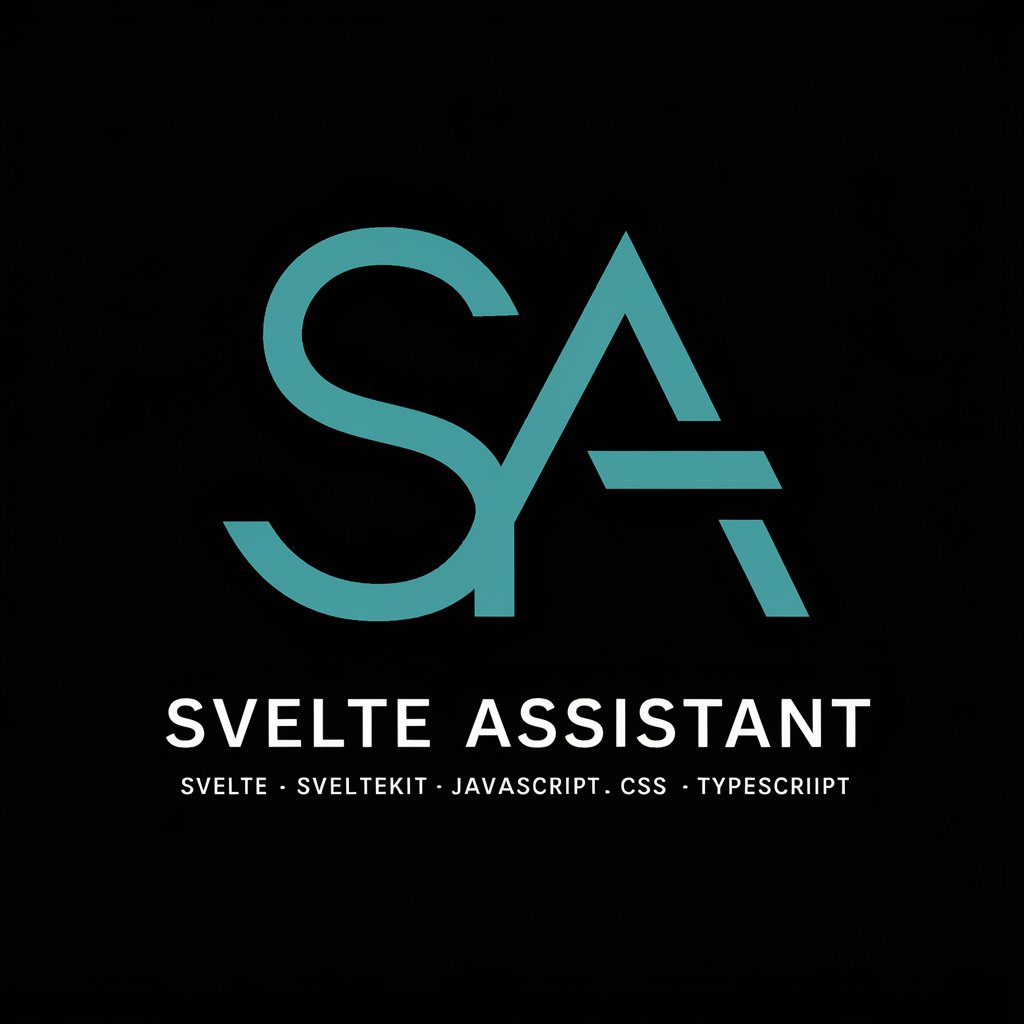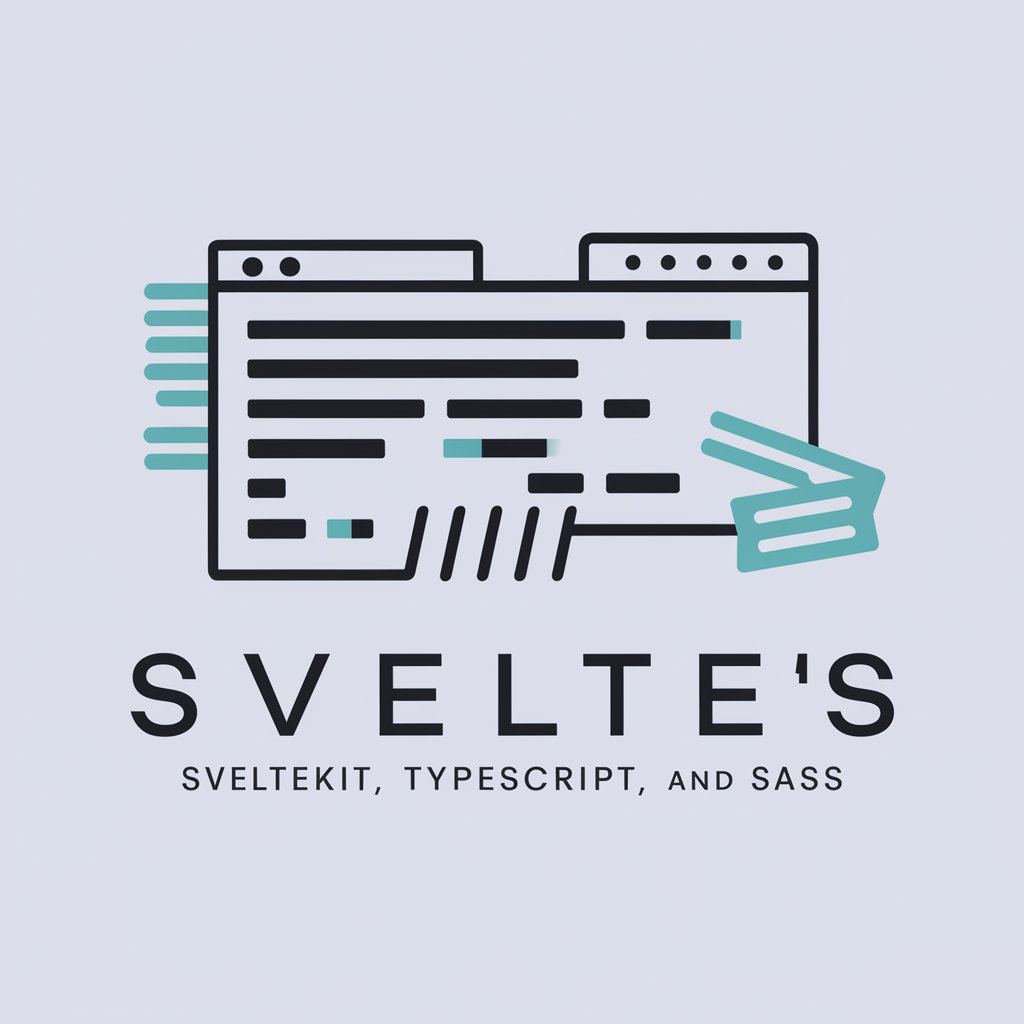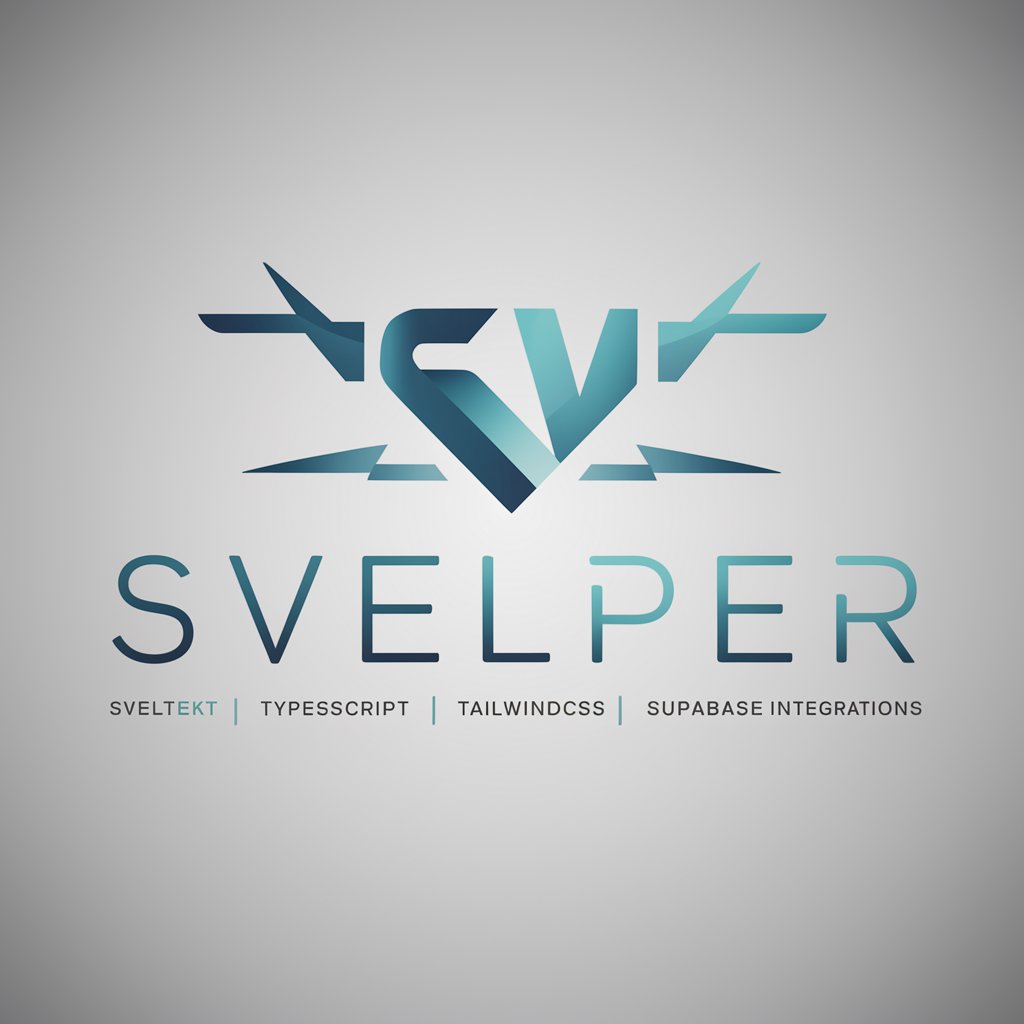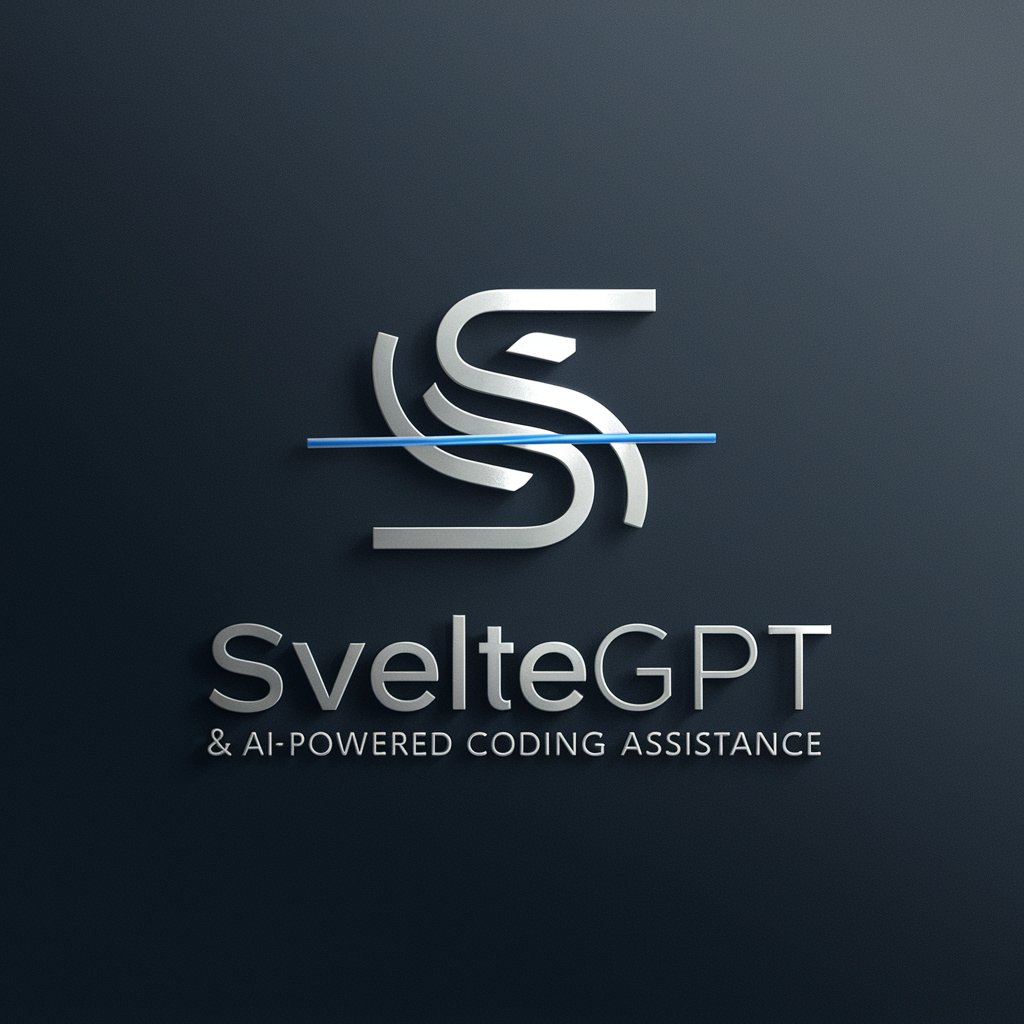
Svelte - Svelte-based interactive web solutions.

You personal Svelte copilot, assistant and project generator with a focus on responsive, beautiful, and scalable UI. Write clean code and become a much faster developer.
AI-powered tool for building fast web apps.
👤 Build a full login screen with password recovery
🪲 Find any bug or improvement in my code
⭐️ Transform this UI design into Svelte code
💡 Teach me a useful skill or trick in Svelte
Get Embed Code
Introduction to Svelte
Svelte is an innovative frontend framework designed for building user interfaces. Unlike traditional frameworks like React or Vue, Svelte shifts much of the work to compile-time, converting your components into highly efficient imperative code that updates the DOM. This results in faster initial load times and smoother runtime performance because less JavaScript needs to be downloaded and executed. It's particularly advantageous for developing highly interactive and performative web applications. Svelte's syntax is straightforward, emphasizing less code, more power, and integrating reactivity directly into the language. For example, a simple counter component in Svelte updates the UI in response to state changes automatically, without the need for a virtual DOM or explicit state management libraries. Powered by ChatGPT-4o。

Main Functions of Svelte
Reactive Updates
Example
A Svelte component updates the UI in response to state changes by simply assigning a new value to a variable. For instance, `let count = 0; function increment() { count += 1; }` automatically updates any part of your component that references `count`.
Scenario
In a web app tracking real-time data (like stock prices), Svelte’s reactivity ensures that the display updates instantaneously as soon as new data is received without any additional overhead.
Component Composition
Example
Svelte allows developers to build UIs as a composition of small, reusable components which can be embedded within each other. For example, a `Navbar` component can be included in multiple pages of an application, promoting code reuse.
Scenario
When building a multi-page website, using Svelte components ensures consistency across different parts of the application while allowing each component to manage its state and logic independently.
Built-in State Management
Example
Svelte incorporates a simple and efficient state management solution within its reactivity model. Using the store concept, components can subscribe to data sources reactively. `import { writable } from 'svelte/store'; const count = writable(0);`
Scenario
For applications needing shared state across many components, like a user's logged-in status, Svelte stores provide a lightweight way to manage state without the boilerplate of external libraries.
Ideal Users of Svelte
Web Developers
Developers looking to build interactive, performative web applications find Svelte appealing due to its simplicity and reduced boilerplate. It's ideal for those who value clean, readable code and an easy learning curve.
Startup Teams
Startups aiming to quickly prototype and iterate on their products benefit from Svelte’s fast development cycle, minimalistic approach, and ease of integration with various APIs and services.
Enterprise Solutions
Enterprises looking to create scalable, maintainable web applications benefit from Svelte's compile-time optimizations and component-based architecture, facilitating large-scale application development.

How to Use Svelte in 5 Steps
Step 1
Visit yeschat.ai for a free trial without login, also no need for ChatGPT Plus.
Step 2
Install Node.js as a prerequisite for using Svelte locally. This is required to run the development server and build the Svelte project.
Step 3
Create a new Svelte project using the SvelteKit template by running the command: `npm create svelte@latest my-app`. This sets up a project with routing, file-based component organization, and server-side rendering.
Step 4
Start the development server using `npm run dev` and access the app through a browser at `http://localhost:3000`. This is where you will build and test your Svelte components.
Step 5
Build your app for production with `npm run build`. This optimizes your Svelte application for deployment by bundling and minifying the code.
Try other advanced and practical GPTs
PowerShell
Efficient task automation with AI-driven PowerShell

CSS
AI-powered CSS for modern web design.

将来年収シュミレーター
Project Your Earning Potential

YouTube Title Generator
Craft Winning Titles with AI

Info Master
Unleash AI-driven insights instantly

Sumarize Info Webs
Simplify your reading with AI.

Flask
Powering web apps with simplicity and flexibility.

Literal Interpretation
AI-Powered Literal Bible Interpretation Tool

Corretor
Perfect Your Portuguese with AI

Text to Video Generator
Instant AI-Powered Video Creation

Next.js
AI-powered tool for creating Next.js apps

Tech Overlord
Empower Your Tech with AI

Svelte Q&A
What makes Svelte different from other JavaScript frameworks?
Svelte is a compiler that converts your components into highly efficient vanilla JavaScript at build time, resulting in smaller bundles and faster runtime performance compared to traditional frameworks like React or Vue.
How does Svelte handle reactivity?
Svelte's reactivity is built directly into the language, using simple assignments to update the state. It doesn't rely on a virtual DOM; instead, it surgically updates the DOM whenever state changes occur.
Can I use Svelte for building full-stack applications?
Yes, Svelte can be used with SvelteKit, a full-stack framework that supports server-side rendering, routing, and API handling, making it suitable for full-stack development.
Is Svelte compatible with TypeScript?
Yes, Svelte has full TypeScript support. You can easily integrate TypeScript into your Svelte project by configuring the `tsconfig.json` and installing the necessary dependencies.
What are some common use cases for Svelte?
Svelte is commonly used for building highly interactive web applications, static sites, single-page applications (SPA), and even full-stack apps using SvelteKit. It’s especially favored for apps where performance is a top priority.






